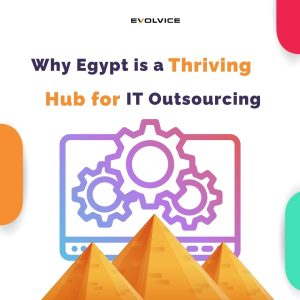One wrong click. One missed (or ignored) alert. One password reused across accounts. That’s all it takes to go from thriving to arriving… at devastating financial losses and lost client trust.
Because cybersecurity isn’t just about firewalls, VPNs, or the latest AI-driven tools.
It’s about people.
The harsh truth? Even the most advanced systems can crumble with one careless click. Surpassing 90% – that’s how many breaches involve human error: weak passwords, accidental data leaks, or someone falling for a phishing scam.
So, your employees can either sink your cybersecurity efforts or become your strongest line of defense. The difference? Effective, consistent training.
But let’s figure out why that’s the case first.
Human Error: Still Cybersecurity’s Biggest Problem
Cyber threats evolve with scary speed, but one fact remains consistent: attackers target people, not just systems. And they don’t always need advanced hacking skills; they just need to trick an employee into clicking a link.
A cleverly disguised email, a moment of distraction, and, there it is, the attacker is inside your network.
This isn’t just about carelessness – it’s about habits, pressure, and gaps in awareness. Employees are juggling deadlines and distractions while navigating complex systems. Without the right guidance, even well-meaning staff can create costly security holes.
Here are the biggest reasons why that might happen:
Not Enough Training
Once-a-year workshops aren’t going to cut it. By the time the next session rolls around, hackers have invented five new tricks. To keep pace, your team needs regular, bite-sized lessons that embed cybersecurity awareness into their daily workflow, not just their memory.
Hackers Are Evolving Fast
Today’s attackers aren’t guessing – they’re hunting. Armed with stolen credentials and AI-crafted phishing scams, they tailor their assaults to bypass even the most cautious employees. Generic training can’t keep up. Your team needs real-world simulations to practice spotting threats before it’s too late.
No Clear Policies = No Protection
When policies are vague (or non-existent), security becomes guesswork. Employees left to “figure it out” create gaps big enough for hackers to waltz through. Clear rules, consistently reinforced, are the foundation of a strong security culture. Without them, even the best tools fail.
Long story short, hackers don’t have to break into your systems – they just need your team to make a mistake.
All that being said, what exactly are the cyber threats we’re all facing today? Let’s find out.
Top Cybersecurity Threats Employees Face Today
These aren’t theoretical threats. They’re sitting in your employees’ inboxes right now, waiting for one distracted click. So, here’s what’s lurking that one click away:
Phishing Attacks
Phishing emails pose as trusted contacts or reputable organizations, baiting employees into revealing sensitive data or clicking on malicious links. A wolf in sheep’s clothing, these scams prey on human instinct – urgency, fear, curiosity – to slip past even cautious users. Today’s phishing isn’t generic spam, either. It’s laser-focused on specific roles, crafted to bypass filters and fool even your most seasoned team members.
Data Leaks
Sensitive files landing in the wrong inbox. Unencrypted data sent over public networks. Employees sharing “just this once” on unauthorized platforms. It’s not hackers breaking in – it’s your very team accidentally handing the keys over. And the worst part? You’ll never know how far that information spreads until it’s too late.
Weak Passwords
Passwords like “password123” may sound like a punchline, but you’d be surprised (and shocked) how common these still are – and hackers know it. Relying on weak or reused passwords isn’t just making systems vulnerable: it’s all but leaving the front door wide open. And with credential-stuffing attacks on the rise, one lazy password can unlock every system it’s tied to.
Ransomware
Ransomware doesn’t knock – it barges in and shuts you down, locking access to a company’s systems or encrypting critical data. Think digital kidnapping, where attackers hold your critical data hostage until a hefty ransom is paid. It spreads through phishing emails, compromised websites, or infected downloads, exploiting employees as the entry point. Modern ransomware doesn’t just hit your files either; it cripples operations, halts revenue, and threatens to leak sensitive information if demands aren’t met. And recovery? Painfully slow, massively expensive, and often too late to undo the damage.
Social Engineering
Social engineering isn’t about breaking firewalls – it’s about breaking people. Manipulating the very same emotions like trust, fear, or urgency, attackers trick employees into handing over sensitive data, credentials, or even access to systems. A fraudster posing as your CEO with an “urgent request”? A fake IT support call asking for passwords? These tactics bypass technical safeguards entirely, making untrained staff the easiest way in.
Unsecured Devices
Unsecured devices are open doors for attackers. Remote work means employees are logging in from airports, cafés, and home networks, often on personal devices with minimal protection. A single session on public Wi‑Fi can expose sensitive company data to prying eyes. Without strict controls and regular training, these everyday habits turn into massive security gaps.
Why Prevention Beats Reaction (Every Time)
Imagine this:
A phishing email lands in your finance department’s inbox. One employee clicks, enters their credentials, and, there you go, the attackers are inside your systems.
From there, it’s a race to stop ransomware, recover lost data, and notify customers and regulators. The average cost? $4.88 million per breach, according to IBM.
Now imagine the same scenario, but the employee recognizes the phishing attempt thanks to regular training and simulation exercises. They report it. The attack fails before it starts.
The difference? Proactive Human Risk Management.
Human Risk Management (HRM): What & Why It Matters
Again, most breaches don’t start with a technical failure – they start with a human one. That usually means that the ‘human’ in this chain is the weakest link.
Human Risk Management flips that script. Instead of viewing employees as a cybersecurity liability, HRM empowers them to become your cybersec rock.
Combining training, testing, and monitoring, HRM reduces risky behavior and builds a culture of security from the ground up.
Here’s how Evolvice + uSecure make that happen:
Your Team Stops Threats Before They Spread
Traditional security training often feels like a box-ticking exercise – annual briefings that leave employees overwhelmed and underprepared. HRM takes a smarter route: personalized, bite-sized lessons combined with phishing simulations that help employees build real instincts.
This means that when a real attack comes – whether it’s a ransomware email or a social engineering scam – your team isn’t caught off guard.
- Develop instinctive threat recognition through microlearning and simulations.
- Spot and block phishing, ransomware, and scams before they escalate.
- Build employee confidence to act quickly when suspicious activity arises.
One trained employee can stop a breach cold.
Gain Total Visibility Into Human Risk
You can’t fix what you can’t see. Most organizations operate in the dark when it comes to employee cybersecurity behavior, hoping for the best until something goes wrong. HRM eliminates the guesswork.
With Evolvice + uSecure, IT leaders gain a real-time human risk dashboard showing exactly where vulnerabilities lie and what actions are needed.
- Live dashboards highlight progress and weak spots across the organization.
- Simplified compliance tracking ensures you’re always audit-ready.
- Proactive insights allow you to patch holes before attackers exploit them.
This isn’t just about monitoring; it’s about taking back control of your organization’s human risk profile.
Minimize Breach Costs & Strengthen Compliance
Even the best technical defenses can’t catch every mistake, and attackers know it. That’s why HRM isn’t just about stopping threats before they happen; it’s about ensuring your business stays resilient when one slips through.
- Contain breaches faster by training employees to act decisively under pressure.
- Slash recovery costs by limiting how far attackers can get when a mistake is made.
- Keep operations running and avoid extended downtime that can cripple revenue.
- Protect client confidence and avoid PR disasters by showing your team is ready for anything.
Likewise, staying compliant isn’t a box-ticking exercise it may have been before. Regulations like GDPR and ISO 27001 require businesses to actively manage human risk, not just rely on technical safeguards. HRM helps you weave compliance into daily workflows so that you’re prepared when scrutiny comes.
- Embed secure practices into everyday routines, reducing the chance of violations.
- Show regulators you’re serious about risk with clear, automated records of employee training and readiness.
- Avoid hefty fines and legal fallout by proving you’re doing your part to protect data.
This isn’t about reacting to problems – it’s about building a workforce that’s prepared, compliant, and confident enough to stop attacks in their tracks.
The Future of Cybersecurity Starts With Your Team
Technology alone can’t win that cybersecurity battle. Firewalls and encryption protect the perimeter, but it’s the people who guard the gates – or leave them wide open.
In other words, Human Risk Management isn’t a “nice to have” thing anymore. It’s the difference between a workforce that unknowingly invites threats in and one that instinctively keeps them out.
By investing in smarter, more engaging training and tools, you’re not just reducing risk – you’re building a resilient culture where security becomes second nature. The payoff? Fewer breaches, less downtime, and a team that’s ready to meet any threat head-on.
Attackers are evolving. Your defenses should, too.
Ready to fortify your cybersecurity posture?
👉 Request your free Human Risk Assessment today




